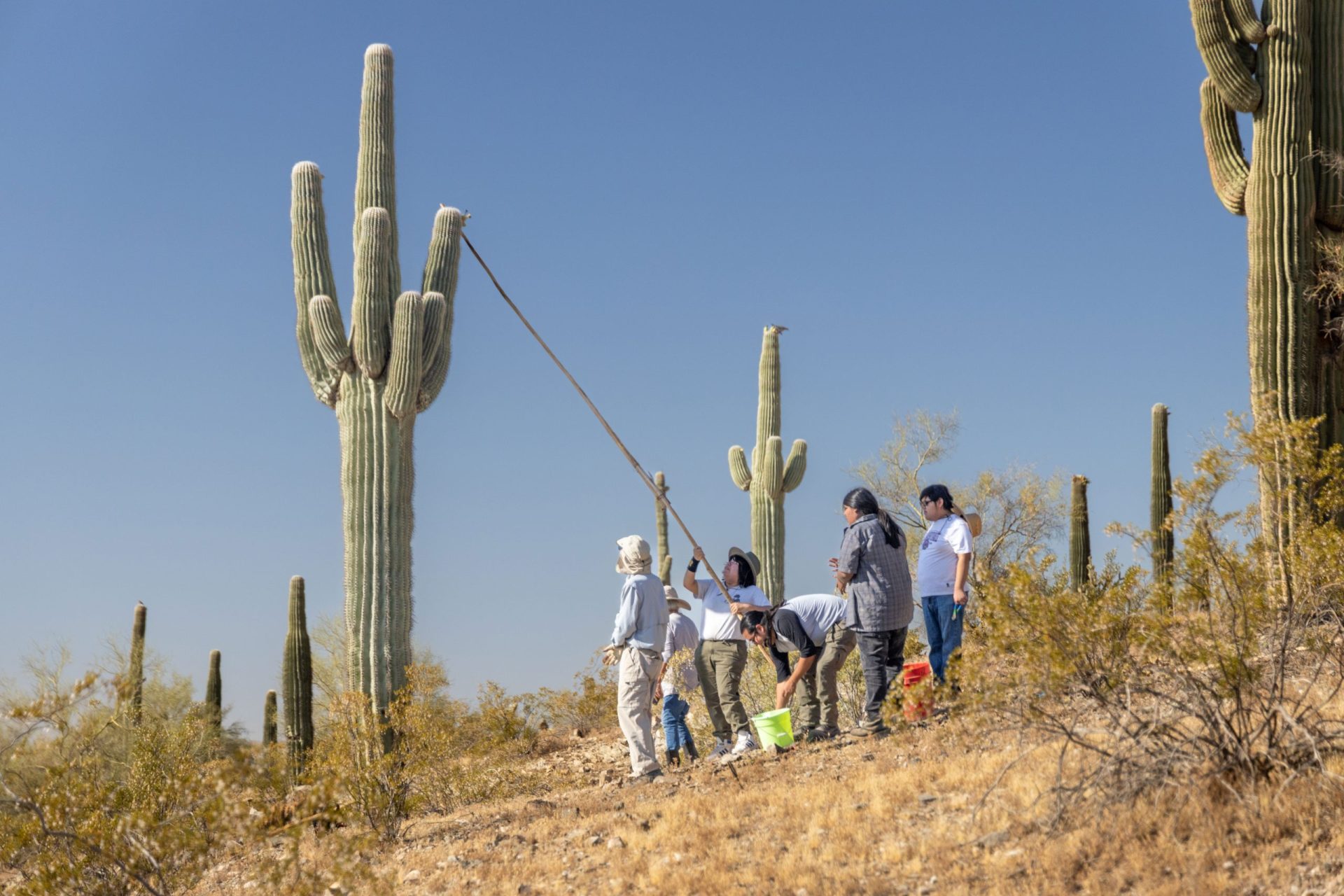VIEWS: 2476
July 29, 2023O’ODHAM COMMUNITIES PARTNER FOR ANNUAL HAṢAÑ BAHIDAG HARVEST
In the early hours of June 30, more than a dozen Akimel O’odham and Onk Akimel O’odham tribal members gathered to harvest the ripe bahidag (fruit) from the Ha:ṣañ (saguaro cactus) at Aji Mountain in District 4, on the lands of the Gila River Indian Community. The harvest was a joint effort between the Huhugam Ki: Museum of the Salt River Pima-Maricopa Indian Community Cultural Resources Department and the Gila River Indian Community’s Huhugam Heritage Center.
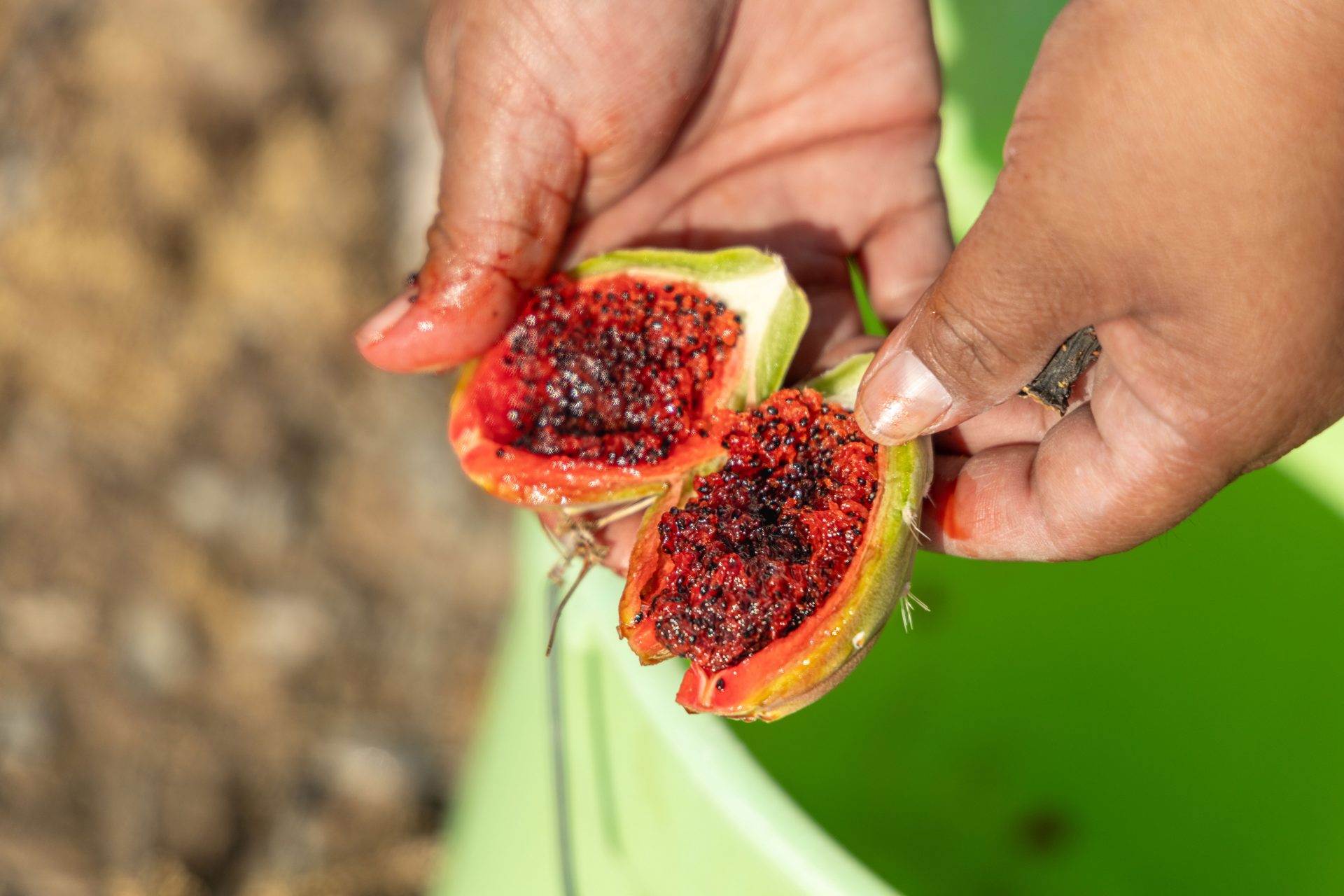

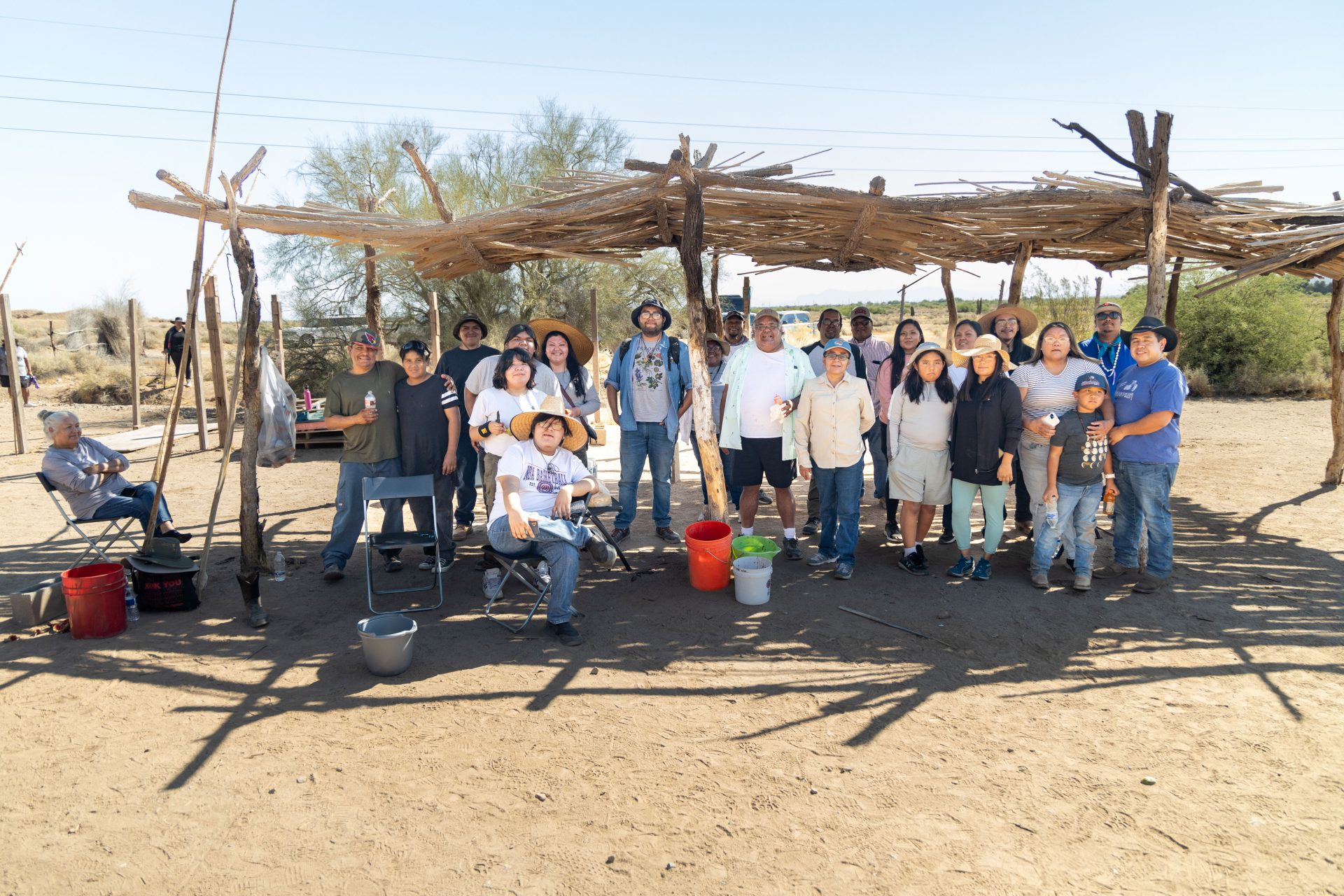
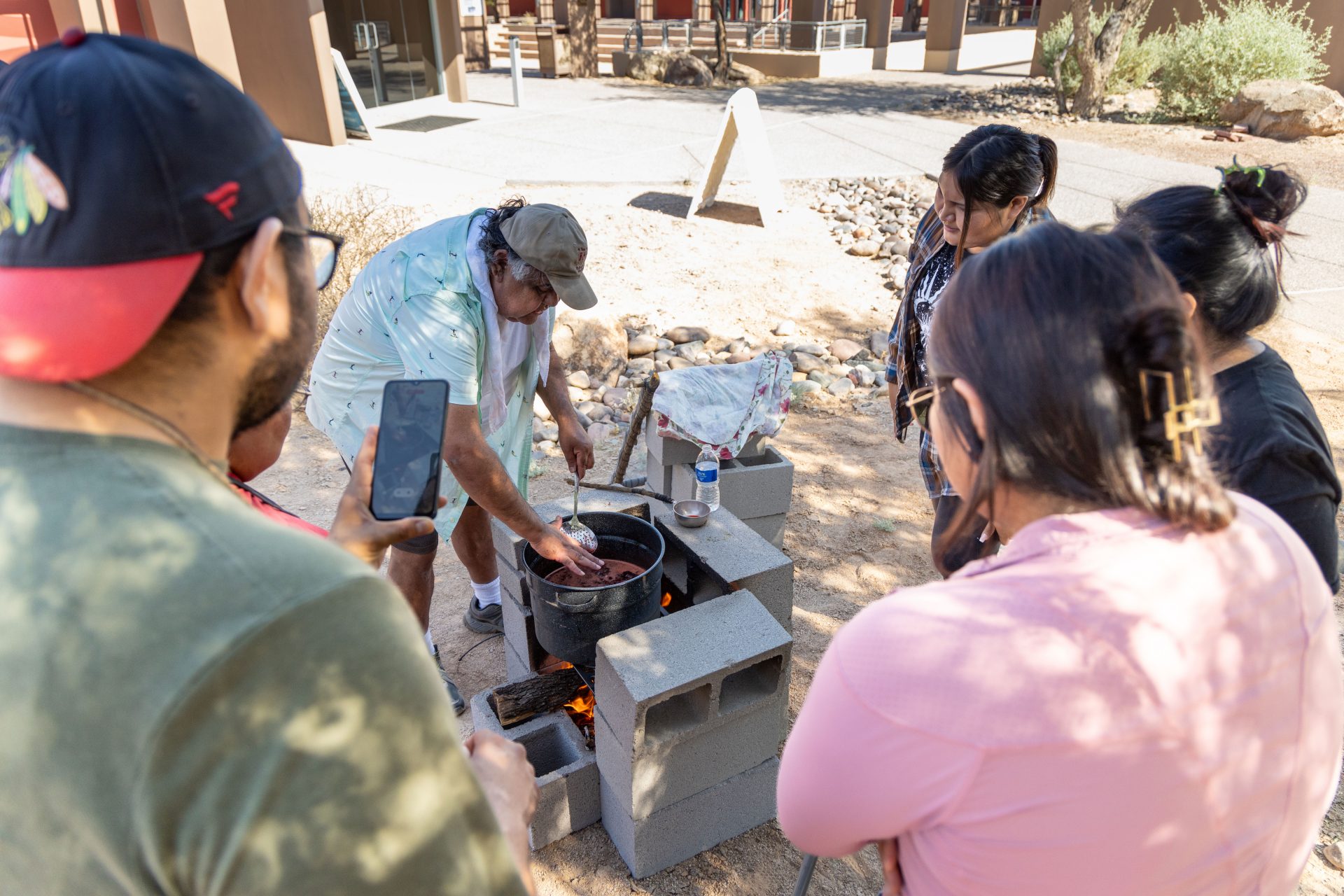
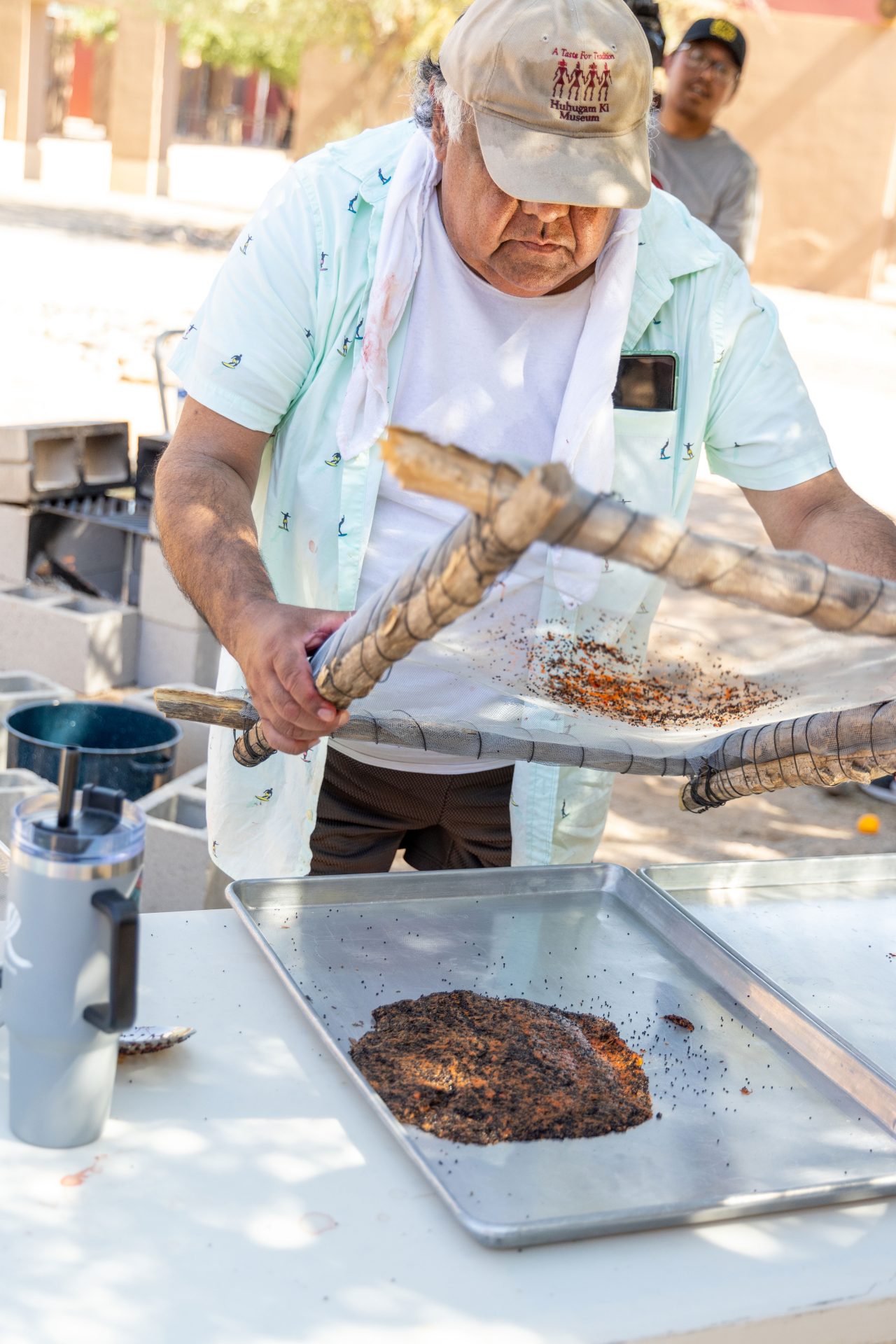
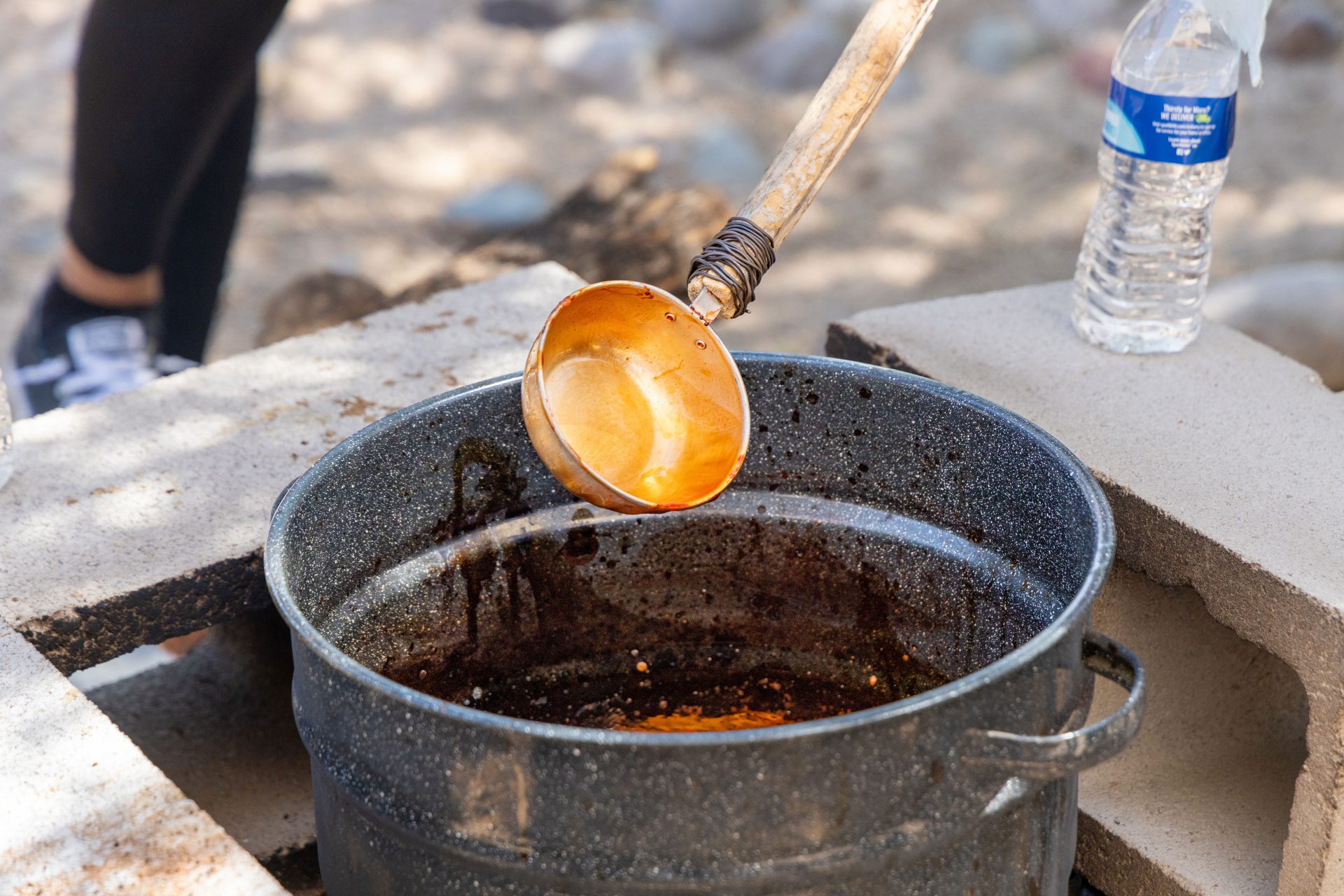
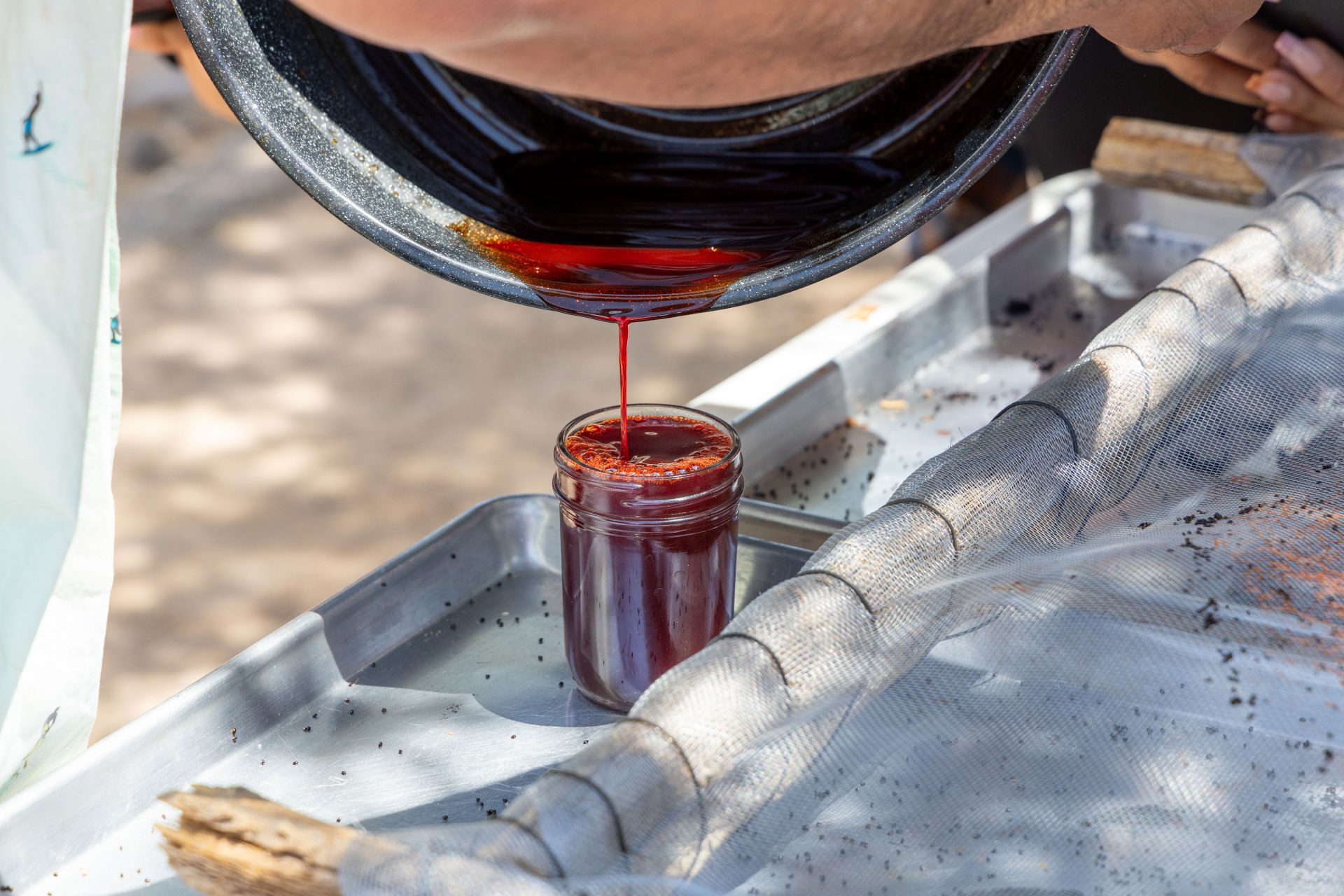
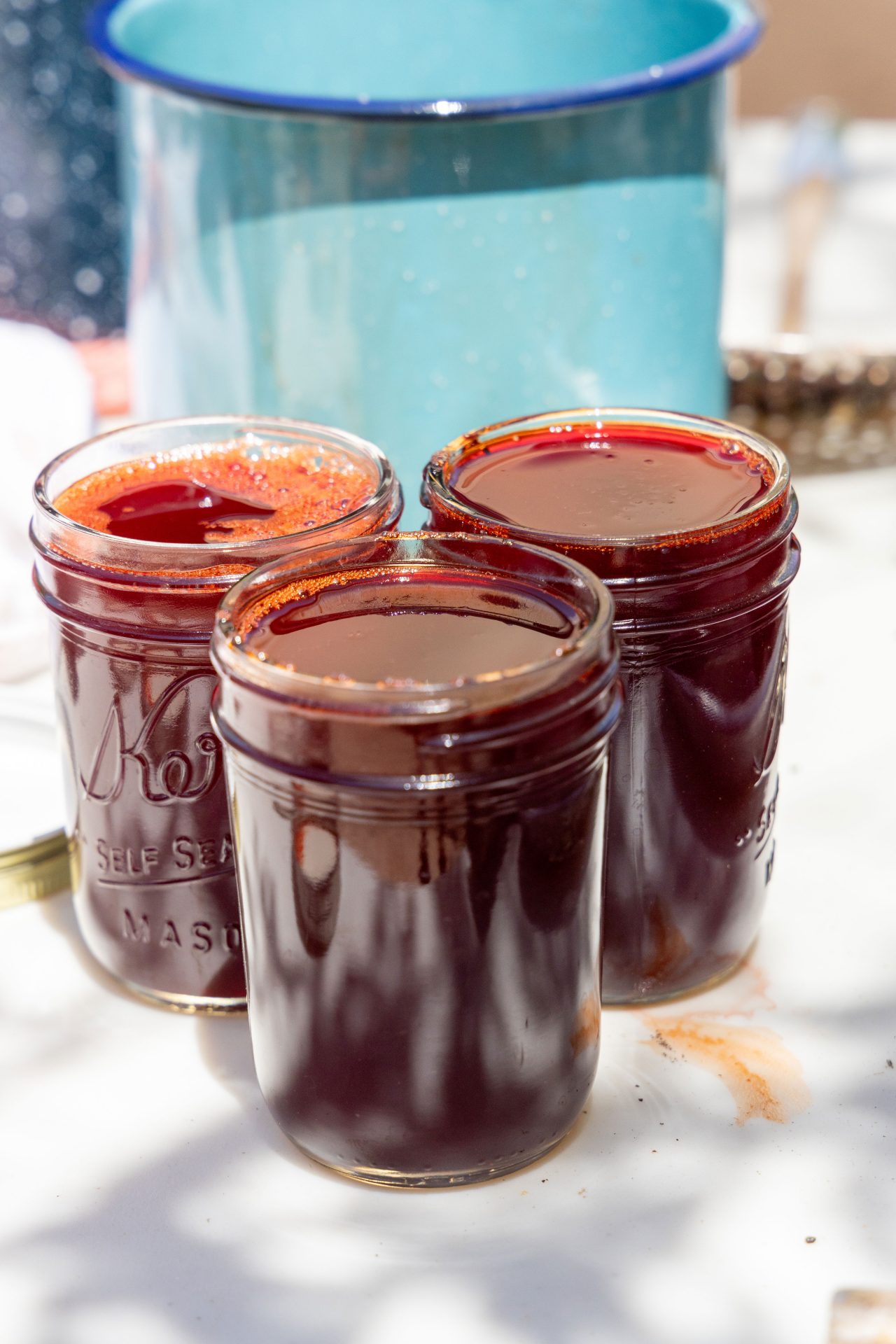
During the time of the O’odham New Year (or summer solstice), Community members from both GRIC and SRPMIC venture out into the desert to pick the ripe cactus fruit, or bahidag, that sits atop the towering Sonoran Desert giants.
Under the guidance of Huhugam Ki: Museum Manager Gary Owens, groups of participants scattered across the side of the twin butte Aji Mountain, moving from cactus to cactus in search of the desert’s delights. Equipped with buckets and a pole called a Kuipaḍ made from long saguaro cactus ribs (Va:pai), individuals reached up to pull or push the fruit loose.
After the fruit fell to the ground below, participants opened up the bahidag to reveal the bright red pulp, which is then placed into the bucket. Harvesters then leave the fruit’s skin facing open side up in a symbolic gesture to welcome rain in the summer months ahead.
At the conclusion of the harvest, everyone gathered to talk about their experiences and what comes next, which is cooking the saguaro fruit into a syrup. SRPMIC participant Aloea Goodwin said, “I think I did pretty good for it being the first time I harvested the fruit, just knowing what it takes and the effort you need to put in, in order to get the fruit.”
She was joined by her brothers Alex and Adam, who also were first-timers at the ha:ṣañ bahidag harvest. Goodwin said that it was a learning experience about the culture of the Community and the O’odham and that it is important for tribal members to join in cultural events like these when they are offered.
Cultural Specialist Isaac Lopez of the SRPMIC Youth Services Department said this year’s harvest was his second time. He said it offered an important lesson for him that he can share with the Community youth.
“My first time [harvesting] was with the late Ron Carlos. He showed us and taught us how to pick ha:ṣañ bahidag … so I have been learning from that and showing the youth how to pick bahidag and the traditions associated the harvesting the fruit,” said Lopez.
Shirley Jackson, Director of the GRIC Huhugam Heritage Center, said the collaboration between SRPMIC and GRIC stemmed from a cross-sharing of information and knowledge on ha:ṣañ bahidag, from learning about and harvesting the fruit to how to cook it.
“We thought we would put it out to the audience there about possibly having a harvest, because we invited Gary [Owens] to provide a lecture in June,” said Jackson. She said that on the weekend prior, they held their first harvest, which yielded some ha:ṣañ bahidag; but first impressions from the recent haul showed there was more fruit to be collected.
She said collaboration between the two tribal museums is not uncommon. “We have meetings for the directors of the Four Southern Tribes’ museums, and we meet quarterly or at least a couple of times a year just to catch up and to talk about what’s going on in the museum field. We discuss our various projects and collections, you know, things that we all of course have in common since we’re all connected.”
Looking back on the harvest, Owens said, “I had a great time. We have fruit and that is what’s important. This is the first time in conjunction with Gila River that I’ve harvested here. I’m happy because in order to have a good cook (cooking of the ha:ṣañ bahidag), everything has to go right; I was taught that you need a minimum of three and a half gallons of fruit pulp to get a good batch of syrup.”
He said part of the reason behind the collaboration with GRIC is because many of the areas to harvest ha:ṣañ bahidag near SRPMIC are not easily accessible due to issues of land jurisdiction with neighboring municipalities. Owens added that it was a good opportunity for him and the volunteers from SRPMIC to harvest at a new location and to strengthen relations between the two tribes.
The following-day, Owens provided a cooking demonstration of how to make Sitol (syrup) with GRIC and SRPMIC youth and adults in attendance at GRIC Huhugam Heritage Center. The cooking process is a time-consuming process that requires both patience and skill from the preparing the fruit and tending to the fire, the wood and amount used, and the attention to separating the seeds and thorns from the fruit and then cooking the extracted juice until it reaches the desired thickness.
The cooled syrup is then poured and stored in glass jars and lids. In historical times, the syrup was poured into small clay jars and covered with a pottery sherd, then sealed with wet clay. For a successful picking and cooking you would come back with maybe 2 or 3 quarts. For this year’s event, the HHC received 3 small jars of syrup and the instructor received the seeds and pulp fibers to make saguaro fruit jam in the winter months. It was a nice harvest experience and teaching project for all.

